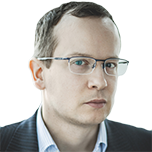What is the outlook for oil prices?
Oil prices will be set by the face-off between Saudi Arabia and US shale producers. Could tail risks change the possible outcome?


Two decades ago, I was covering energy when oil moved above the $20-$30 a barrel range, where it had trodden water for years, and headed above $40. At the time, few analysts thought it would stay there and I don’t remember any believing it could top $50. As we now know, oil kept rising – with some volatility – to trade consistently in the $90-$110 range from 2011 to 2014.
In hindsight, nobody fully predicted the impact of rising demand in emerging markets, especially China, where it went from 4.6 million barrels a day (mb/d) in 2000 to 9.3mb/d by 2010. An oversight like that should make us wary about predicting too confidently what recent events – from Saudi Arabia saying it will raise output and drop its $100 target price, to the risk of war in the Middle East – will mean. Still, the history of the oil price may give us a few clues about what to watch.
Oil prices over the years
In the 1950s and 1960s, oil was abundant, but the oil price was carefully controlled and fairly stable (equivalent to about $30 in today’s terms). However, the power of Middle East exporters was rising as rapid demand growth swallowed up spare capacity in the US. In 1973, prices soared as these producers announced an embargo on exports to countries that had supported Israel during the Yom Kippur War. A second spike followed in 1979 after the Iranian Revolution and as the Iran-Iraq War disrupted production.
MoneyWeek
Subscribe to MoneyWeek today and get your first six magazine issues absolutely FREE

Sign up to Money Morning
Don't miss the latest investment and personal finances news, market analysis, plus money-saving tips with our free twice-daily newsletter
Don't miss the latest investment and personal finances news, market analysis, plus money-saving tips with our free twice-daily newsletter
High prices drove rapid growth from new sources – eg, the North Sea and Alaska – and crude declined steadily. Saudi Arabia tried cutting production to defend higher prices. Its output fell from around over 10mb/d in 1980 to under 3mb/d in 1985, when it got tired of this and ramped up again to regain market share. Prices briefly fell 50% before spending most of the next decade fairly steady (barring a spike in the Gulf War).
Then we had a demand slump in emerging markets crisis in 1997 and 1998; the recovery and the boom of the 2000s; a brief collapse during the global financial crisis; and then a rebound to what looked like a permanently higher era. This sparked the US shale oil boom. Saudi Arabia increased production to try to crush it, halving prices again. The pandemic, which hit demand, and sanctions on Russia after it invaded Ukraine, which disrupted supply, bring us up to date.
The balancing act now is US shale versus Saudi Arabia. US firms needed a breakeven price of $64 to drill a new well earlier this year, according to a survey by the Federal Reserve Bank of Dallas; existing wells needed $39 to cover costs. If that’s broadly right, shale supply should be squeezed if Saudi Arabia takes prices below $60, as wells run down (shale wells decline faster than conventional ones) and new ones aren’t drilled. Conversely, get to $90 and they’ll throw everything at it.
So that seems a logical – if volatile – range over the medium-term. Still, the tail risks go every possible way: a Middle East regional war that locks in capacity, a peak and decline in US shale, a faster transition to renewables, an economic crisis (eg, in China), or even, on the bull side, demand that rises faster than expected in India.
This article was first published in MoneyWeek's magazine. Enjoy exclusive early access to news, opinion and analysis from our team of financial experts with a MoneyWeek subscription.
Get the latest financial news, insights and expert analysis from our award-winning MoneyWeek team, to help you understand what really matters when it comes to your finances.
Cris Sholto Heaton is an investment analyst and writer who has been contributing to MoneyWeek since 2006 and was managing editor of the magazine between 2016 and 2018. He is especially interested in international investing, believing many investors still focus too much on their home markets and that it pays to take advantage of all the opportunities the world offers. He often writes about Asian equities, international income and global asset allocation.
Cris began his career in financial services consultancy at PwC and Lane Clark & Peacock, before an abrupt change of direction into oil, gas and energy at Petroleum Economist and Platts and subsequently into investment research and writing. In addition to his articles for MoneyWeek, he also works with a number of asset managers, consultancies and financial information providers.
He holds the Chartered Financial Analyst designation and the Investment Management Certificate, as well as degrees in finance and mathematics. He has also studied acting, film-making and photography, and strongly suspects that an awareness of what makes a compelling story is just as important for understanding markets as any amount of qualifications.
-
 Revealed! The most viewed properties on Rightmove amid Boxing Day boost
Revealed! The most viewed properties on Rightmove amid Boxing Day boostThe property website predicts that the housing market is set for a busy 2026 based on user activity over the festive period. Here are the most viewed homes on Rightmove during Boxing Day
-
 ISS backs Edinburgh Worldwide’s board as Saba questions SpaceX selloff
ISS backs Edinburgh Worldwide’s board as Saba questions SpaceX selloffShareholder advisor ISS has recommended that shareholders vote against Saba’s proposals to replace the board of the Baillie Gifford-managed investment trust
-
 'Investors will reap long-term rewards from being bullish on UK equities'
'Investors will reap long-term rewards from being bullish on UK equities'Opinion Nick Train, portfolio manager, Finsbury Growth & Income Trust, highlights three UK equities where he’d put his money
-
 The graphene revolution is progressing slowly but surely – how to invest
The graphene revolution is progressing slowly but surely – how to investEnthusiasts thought the discovery that graphene, a form of carbon, could be extracted from graphite would change the world. They might've been early, not wrong.
-
 A strong year for dividend hero Murray International – can it continue its winning streak?
A strong year for dividend hero Murray International – can it continue its winning streak?Murray International has been the best-performing global equity trust over the past 12 months, says Max King
-
 The shape of yields to come
The shape of yields to comeCentral banks are likely to buy up short-term bonds to keep debt costs down for governments
-
 The sad decline of investment clubs – and what comes next
The sad decline of investment clubs – and what comes nextOpinion Financial regulation and rising costs are killing off investment clubs that once used to be an enjoyable hobby, says David Prosser
-
 How to profit from the UK leisure sector in 2026
How to profit from the UK leisure sector in 2026The UK leisure sector had a straitened few years but now have cash in the bank and are ready to splurge. The sector is best placed to profit
-
 Who won the streaming wars?
Who won the streaming wars?The battle of the TV and film streaming giants for dominance looks to be entering a final phase. The likely winner may surprise you, says Simon Wilson
-
 'Investors should expect a good year for equities'
'Investors should expect a good year for equities'Opinion The economy is positive, and investors are still cautious, says Max King
